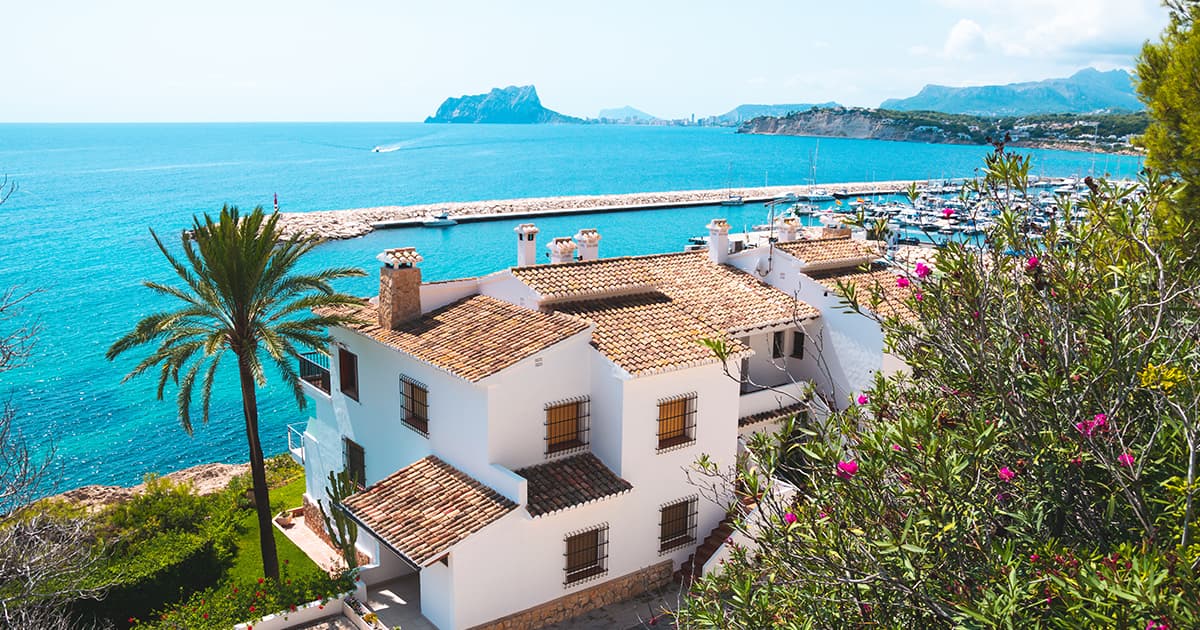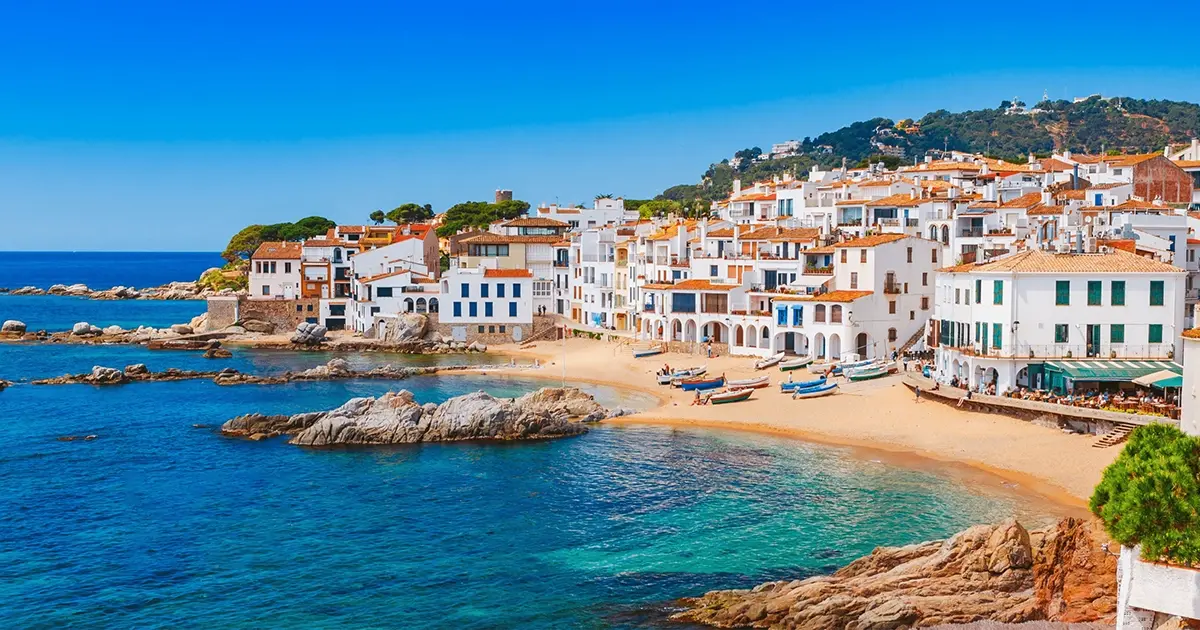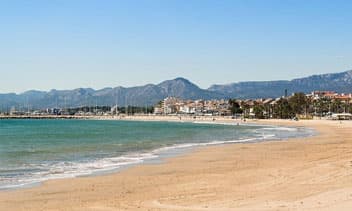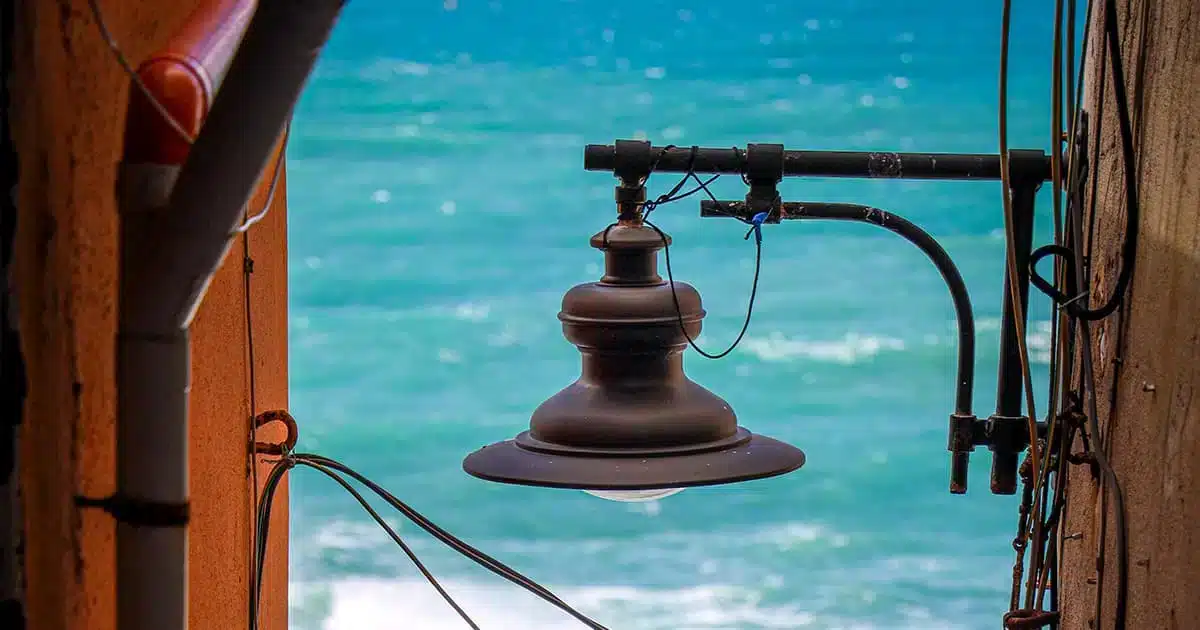
Buying Property in Spain by the Sea: Complete 2025 Guide
Last update: September 3, 2025
Reading time: 24.1 min
No Time to Read It All? Here’s the Quick Summary:
In 2025, Spanish coastal real estate remains one of the most attractive markets in Europe. Prices start at around €1,500/m² in affordable areas such as Murcia, Granada, or the Costa de la Luz, and exceed €5,000/m² in hotspots like the Balearic Islands or Marbella. Prime regions like the Costa Brava, Costa Blanca, and Costa del Sol continue to draw retirees, expats, and global investors thanks to year-round sunshine, the Mediterranean lifestyle, and a strong international tourism economy.
Gross rental yields typically range from 5–7%, fueled by high summer demand and large foreign communities living there all year. However, investing by the sea also means complying with Spain’s Ley de Costas (Coastal Law), budgeting for higher maintenance costs due to the marine climate, and planning around seasonal rental income.
In short: buying property in Spain by the sea combines lifestyle benefits, long-term value, and solid investment potential — provided you do it with the right local expertise.
This 2025 guide to buying property in Spain by the sea explores both the opportunities and the challenges — region by region — to help buyers and investors make informed, secure decisions.
Buying Property in Spain by the Sea: A Market That Captivates
With 7,883 kilometers of coastline, Spain remains one of Europe’s most attractive destinations to live, retire, or invest. From the rugged landscapes of the Costa Brava to the paradise coves of the Balearic Islands, and the world-renowned Costa del Sol, the Spanish coastal property market continues to attract both international investors and expats looking for a Mediterranean lifestyle.
Several factors explain this enduring appeal. Spain enjoys a sun-drenched Mediterranean climate, with over 300 days of sunshine a year in many regions. Property prices by the sea remain competitive compared to other European coastlines such as the French Riviera or Italy. The offer is diverse, ranging from modern apartments in secure residences to traditional villas with panoramic sea views. For many foreign buyers, Spain combines geographic proximity, a lower cost of living, and the feeling of permanent holidays.
However, investing on the Spanish coast also requires careful consideration. The country’s Ley de Costas (Coastal Law) imposes strict regulations on seaside developments, while maintenance costs are higher for properties exposed to sea air. In addition, rental income is often highly seasonal, which investors must factor into their strategy.
Why Is Investing in Spanish Coastal Property So Appealing?
A Mediterranean Lifestyle Like No Other
Buying property in Spain by the sea is not just a financial decision — it’s often a life project. The Spanish coastline offers an exceptional Mediterranean climate, with more than 300 days of sunshine per year in some regions, mild winters, and summers filled with beachside activities.
Beaches, water sports, golf courses, gastronomy, and a vibrant outdoor lifestyle attract thousands of new residents each year — especially retirees and expats from Northern Europe seeking better quality of life at a lower cost than in their home countries.
More Affordable Than Other European Coastlines
One of the biggest advantages of Spanish coastal real estate remains its price per square meter. Even in premium areas like Marbella or the Balearic Islands, property costs are generally lower than on the French Riviera or Italian coast.
At the same budget, buyers in Spain often enjoy larger living spaces and superior amenities: private pools, terraces with sea views, direct beach access, or gated communities. This price gap makes Spain one of the most competitive property markets in Europe for international buyers.
Strong Rental Demand Driven by Tourism
Beyond personal enjoyment, Spanish coastal real estate is also highly attractive for investors. Spain’s booming international tourism ensures very high occupancy rates in summer.
Certain regions — such as Alicante, Valencia, and Malaga — combine seasonal tourism with established expat communities, creating stable rental demand even outside the peak months. This dual market makes the Spanish coastline a strategic choice for investors seeking both rental income and long-term capital appreciation.
In short, Spain offers a rare combination: exceptional lifestyle, competitive prices, and strong rental potential. That’s why, in 2025, it remains one of the most sought-after property destinations in Europe.
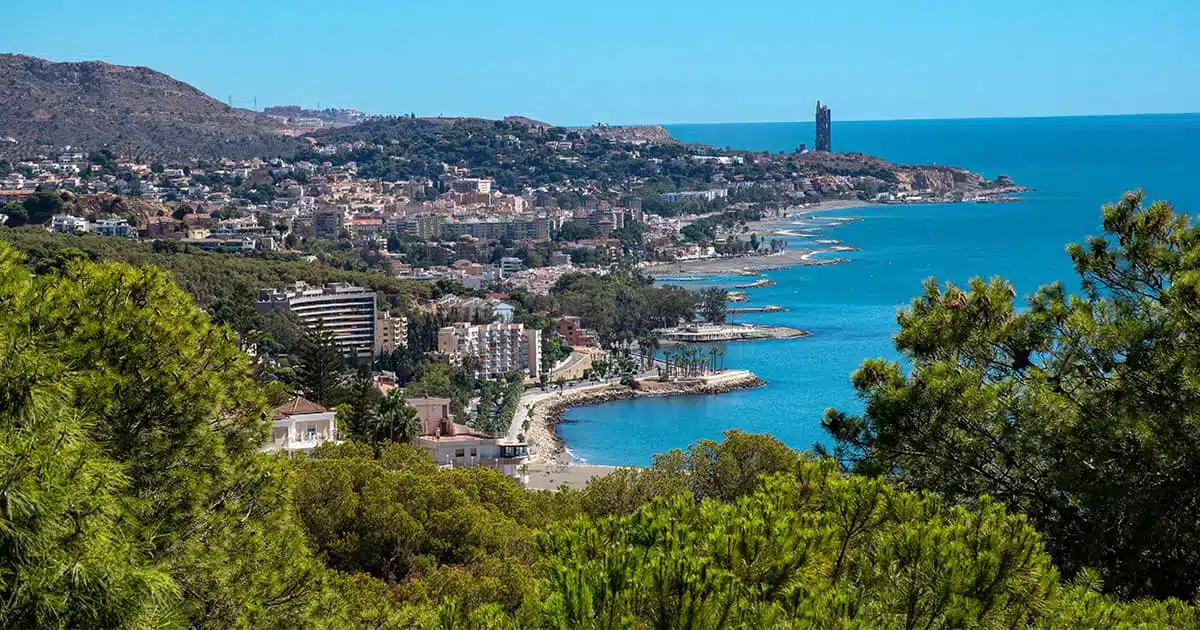
A Closer Look at Spain’s Main Coastal Property Markets
With such a diverse coastline, Spain offers very different real estate opportunities depending on the region. Buying property in Spain by the sea does not mean the same thing in the Costa Brava, the Costa Blanca, or the Costa del Sol. Below is an overview of the most popular coastal areas, including average prices, rental yields, and buyer profiles.
Costa Brava and Costa Dorada: Close to France, Strong Tourist Appeal
In Catalonia, the Costa Brava (Girona province) is a favorite for French buyers thanks to its proximity to the border. Its rugged coastline and picturesque towns such as Cadaqués attract families and second-home buyers. Property prices average around €2,587/m², with rental yields near 5%, in line with the Spanish national average.
Further south, the Costa Dorada (Tarragona province) is more affordable. Family-friendly resorts such as Salou and Cambrils offer property at around €1,728/m². Yields are slightly higher (5–7%) due to strong summer holiday demand from Spanish and European families.
Costa Blanca and Costa Cálida: Sunshine and High Rental Yields
The Costa Blanca (Alicante province) is one of Spain’s top destinations for international property buyers. Known for its long sandy beaches and vibrant towns such as Benidorm and Torrevieja, it is especially popular among Northern European retirees. Property prices average €2,595/m², with gross rental yields reaching 6–7%, supported by strong year-round demand from both tourists and expat residents.
The neighboring Costa Cálida (Murcia region) remains less well-known but offers excellent opportunities. With much lower prices (around €1,515/m²) and a semi-desert climate with abundant sunshine, the area appeals to investors seeking long-term growth potential. Yields can reach 7%, particularly in up-and-coming areas such as Cartagena and San Javier.
Costa del Sol: Luxury and International Market
The Costa del Sol (Malaga province) is arguably Spain’s most famous coastal region. Marbella, Puerto Banús, and Estepona are synonymous with luxury, offering high-end villas, beachfront apartments, and premium gated communities. Prices average €3,842/m², among the highest in Spain.
The market attracts wealthy international buyers — especially from the UK, Scandinavia, Belgium, and France — who are drawn by the exceptional climate and modern infrastructure. While yields are more moderate (around 5%), the high liquidity and strong long-term value make it a secure investment.
Costa de la Luz and Costa Tropical: Undiscovered Alternatives
Less known internationally, the Costa de la Luz (Cadiz and Huelva provinces) and the Costa Tropical (Granada province) are emerging as more affordable alternatives.
The Costa de la Luz, on the Atlantic coast, is famous for its wild beaches and surf culture. Prices remain accessible at €1,800–2,100/m², though rental demand is primarily domestic.
The Costa Tropical offers charming fishing towns like Salobreña and Almuñécar, with average prices of €1,597/m² and yields of around 5%. While rental demand is still modest, the potential for long-term value growth is strong as tourism develops.
The Balearic Islands: Premium and Exclusive
The Balearic Islands (Majorca, Menorca, Ibiza, Formentera) form a market of their own. Highly sought after by international high-net-worth buyers, they command the highest property prices in Spain — often over €5,000/m².
Supply is extremely limited, particularly in hotspots like Ibiza and Palma de Mallorca. Rental yields are lower (4–5%) due to the high entry cost, but the prestige, scarcity, and long-term capital appreciation make Balearic real estate a safe haven for those seeking exclusivity.
Comparative Overview of Spain’s Coastal Real Estate Markets
| Region | Avg. Price (€/m²) | Gross Yield (%) | Rental Demand | International Access |
|---|---|---|---|---|
| Costa Brava (Girona) | ≈ 2,587 | ~5% | French + Spanish tourists | Girona, Barcelona airports |
| Costa Dorada (Tarragona) | ≈ 1,728 | 5–7% | Spanish family tourism | Barcelona, Reus airports |
| Costa Blanca (Alicante) | ≈ 2,595 | 6–7% | International + expats | Alicante airport |
| Costa Cálida (Murcia) | ≈ 1,515 | ~7% | Growing (locals + tourists) | Murcia, Alicante airports |
| Costa del Sol (Malaga) | ≈ 3,842 | ~5% | International (UK, Nordics) | Malaga international airport |
| Costa de la Luz (Cadiz/Huelva) | ≈ 2,000 | ~5% | Spanish + surf tourism | Jerez, Seville, Faro airports |
| Costa Tropical (Granada) | ≈ 1,597 | ~5% | Local + regional tourism | Granada airport |
| Balearic Islands | > 5,000 | 4–5% | High-end international | Palma, Ibiza, Menorca airports |

What Type of Property Should You Buy on the Spanish Coast?
Buying a home in Spain by the sea isn’t just about choosing the right region — the type of property you invest in will directly influence the purchase price, potential rental yield, and overall lifestyle. From modern new-build apartments to charming older homes or renovation projects, each option comes with its own opportunities and challenges.
New-Build Properties (Obra Nueva): Modern Living and Peace of Mind
New-build apartments and villas, known in Spain as obra nueva, are very popular among international buyers. These developments usually include modern amenities such as elevators, swimming pools, underground parking, landscaped gardens, gyms, or even direct beach access.
Another major advantage is compliance with the latest energy efficiency standards, as well as builder’s warranties covering several years — reducing the risk of costly surprises and ensuring immediate comfort.
On the downside, new builds tend to be more expensive per square meter than older homes, and they are often located in large tourist complexes, which may lack character and feel less authentic.
Older Properties: Charm and Prime Locations
Buying an older property on the Spanish coast — whether a townhouse in a historic center or a traditional apartment with sea views — often provides an excellent balance of location and price. These homes typically offer more authentic architecture and central locations, close to beaches, lively neighborhoods, or waterfront promenades.
The main drawback is the need for regular maintenance and potential renovation work: thermal insulation, façade repairs due to salty air, or upgrades to plumbing and electrical systems. These costs can reduce short-term returns, but once renovated, older properties retain strong value and are highly appealing to buyers and tenants looking for authenticity.
Renovation Projects: Betting on Capital Gain
For seasoned investors, buying a renovation property on the Spanish coast can be a strategic play. These homes are usually priced lower, leaving room for significant capital appreciation once renovated. They also allow for full customization — ideal for creating a unique holiday home or a distinctive rental property.
However, renovations carry risks: escalating budgets, extended timelines, and complex permit requirements. In coastal areas, urban planning laws are particularly strict, making it essential to work with a reliable local architect or property expert.
Comparative Overview: New Build vs. Old vs. Renovation
| Property Type | Advantages | Disadvantages | Best Suited For |
|---|---|---|---|
| New Build (Obra Nueva) | Energy-efficient, modern amenities (pool, parking), builder’s warranty | Higher price per m², often in tourist-style complexes | Expats seeking comfort, premium rental investors |
| Older Property | Authentic charm, prime locations (beachfront, city center), lower purchase price | Frequent renovation needs (humidity, insulation, maintenance) | Permanent residents, retirees, heritage investors |
| Renovation Project | Lower entry cost, strong capital gain potential, full customization | Risk of extra costs, complex permits, longer timelines | Experienced investors, long-term value seekers |
In summary:
- Permanent residents should focus on comfort and services: new builds or renovated older homes.
- Rental investors should prioritize attractive properties for seasonal rentals: well-located new builds or upgraded older homes.
- Renovation enthusiasts can unlock long-term value, but only with proper planning and a trusted local team.
Coastal Property Regulations in Spain: What Buyers Need to Know
Buying a beachfront home in Spain means dealing with a strict legal framework. Properties located close to the shoreline are subject to specific rules designed to protect the coastline, the environment, and ensure public access to beaches. Before investing, it is essential to understand the Ley de Costas (Spanish Coastal Law) and how it may affect property ownership.
The Ley de Costas: Protecting Spain’s Shoreline
The Ley de Costas, or Spanish Coastal Law, defines the public maritime-terrestrial zone, which includes beaches, dunes, cliffs, and in some cases, adjoining land. Within this zone, private ownership is prohibited and public access must always be guaranteed.
In practice, this means that even if you purchase a first-line property in Spain, you cannot privatize beach access. Owners are legally required to allow public passage, which limits certain types of developments or modifications.
Protection Zones and Building Restrictions
The law also establishes a 100-meter protection zone inland from the shoreline, where new construction is generally forbidden. Within this zone, only certain renovation or consolidation works may be authorized, and always with the necessary permits.
In protected areas such as Natura 2000 sites or maritime nature reserves, regulations can be even stricter. This makes a thorough urban planning and zoning check essential before buying a beachfront property in Spain.
Building and Renovation Permits on the Coast
Any coastal property project requires municipal approval. Two types of permits exist:
- Licencia de obra menor: for minor works such as painting, interior refurbishments, or light repairs.
- Licencia de obra mayor: for new constructions, extensions, or major renovations.
Because of the environmental sensitivity of the coastline, municipalities enforce stricter controls on these permits to avoid illegal or harmful development.
Risk of Expropriation Due to Erosion
One little-known risk under the Ley de Costas is expropriation. If coastal erosion or rising sea levels advance significantly, the State may extend the public maritime domain and reclaim private land. This has already occurred after severe storms such as Storm Gloria in 2020, which caused widespread coastal damage.
For this reason, it is crucial to verify the cadastral and zoning status of any coastal property (catastro, land registry, local urban plans) before purchase.
In summary: Spain’s Coastal Law does not prevent you from buying a seafront property, but it does impose strict rules. The safest approach is to work with local experts — lawyers, architects, and specialized notaries — to ensure your investment is secure and compliant.
Environmental Risks and Maintenance Costs of Spanish Coastal Property
Buying real estate in Spain by the sea offers an idyllic lifestyle — but it also comes with environmental risks and higher maintenance costs that must be factored into any long-term plan. Understanding these issues early on will help secure your investment.
Climate Change and Rising Sea Levels
Climate change has become an unavoidable factor in coastal property investment. Certain Spanish regions face an increased risk of erosion, flooding, and storm damage.
A key example was Storm Gloria in 2020, which flooded entire beaches and damaged numerous coastal buildings. Events like these show that homes located too close to the shoreline may face significant structural risks and, in extreme cases, even expropriation if coastal erosion worsens.
Ongoing Maintenance in a Marine Environment
Living by the sea requires more frequent and costly upkeep compared to inland properties. Salty sea air accelerates metal corrosion, weakens exterior paint, and gradually damages façades. Persistent humidity can also reduce insulation efficiency and lead to mold if ventilation is poor.
Owners should anticipate recurring expenses such as:
- Anti-humidity treatments,
- Regular façade renovations,
- Replacement of corroded elements (windows, railings, metallic fittings).
These costs should be built into the overall financial plan when buying a Spanish beachfront home.
Higher Community Fees in Coastal Residences
If you buy an apartment in a coastal development, expect higher community fees than inland properties. These typically cover:
- Pool, garden, and common area maintenance,
- Repairs linked to marine exposure (e.g., elevators and building structures affected by salt and humidity).
In tourist-style residences with pools and 24/7 security, annual fees can represent a significant budget, often higher than for similar apartments further inland.
In summary: Environmental risks and higher maintenance costs should not discourage you from buying a property on the Spanish coast. Instead, they should be anticipated and budgeted for. With proper planning and upkeep, your coastal home can retain its long-term value and remain a secure investment.
Rental Potential of Coastal Property in Spain
Buying a house or apartment by the sea in Spain is not just about lifestyle — it can also be a highly attractive rental investment. Thanks to Spain’s thriving international tourism sector, rental yields on coastal properties can be very rewarding, provided you understand the market dynamics and comply with local regulations.
Strong but Seasonal Rental Demand
Short-term holiday rentals see exceptionally high demand in summer, with occupancy rates close to 100% between June and September in popular coastal destinations such as Alicante, Valencia, Málaga, and the Balearic Islands.
However, outside peak season, income often declines sharply, particularly in resorts heavily dependent on summer tourism (e.g., Benidorm, Salou, Torrevieja). To reduce vacancy risks, savvy investors often focus on areas with strong expat communities living year-round — notably along the Costa Blanca and Costa del Sol. This ensures more stable rental demand throughout the year.
Tourist License in Spain: A Legal Requirement for Rentals
In Spain, it is mandatory to obtain a tourist rental license if you plan to rent your property short term through platforms like Airbnb or Booking.com. This license is issued by regional authorities, and the rules vary by autonomous community:
- Catalonia: very strict regulations, with limited licenses in cities such as Barcelona and Salou.
- Balearic Islands: some of the toughest restrictions, especially in Ibiza and Palma, where entire zones have been banned from tourist rentals.
- Andalusia: more flexible, but all properties must be registered with the Registro de Turismo de Andalucía.
Failure to obtain the license can result in hefty fines, often running into tens of thousands of euros, and removal of your property from rental platforms.
In summary: Investing in a beachfront rental property in Spain can generate gross yields of 5–7%, but success depends on effective property management and strict compliance with local regulations. With the right strategy and professional support, coastal rentals in Spain can provide both solid income and long-term value.
How Much Does Coastal Property in Spain Cost in 2025?
The cost of real estate in Spain by the sea varies widely depending on the region. In 2025, the price gap is striking: from around €1,500 per m² in affordable areas such as Murcia and Granada to over €5,000 per m² in premium markets like the Balearic Islands.
Price Range: From €1,500 to Over €5,000 per m²
- Affordable areas: Murcia and Granada still offer opportunities around ≈ €1,500/m², ideal for investors seeking high rental yields at a lower entry cost.
- Mid-range markets: Coastal Catalonia (Platja d’Aro, Roses, Lloret de Mar) averages around ≈ €2,500/m², significantly cheaper than the French Riviera.
- Dynamic zones: On the Costa del Sol (Málaga province), prices reached ≈ €3,046/m² in Q1 2025, an annual increase of +18.5%.
- Premium markets: The Balearic Islands regularly exceed €5,000/m², reflecting strong international demand and limited supply.
According to Tinsa, the average price of a Spanish coastal second home stands at ≈ €2,970/m² in 2025, showing an annual increase of +7.2%, close to the national housing market trend (+7.7%).
Spain vs. the French Riviera
Spain remains highly competitive compared to the Côte d’Azur, with beachfront prices on average 30–50% lower.
- In Lloret de Mar (Catalonia), prices average ≈ €2,500/m², compared with €5,000+/m² in prestigious French Riviera towns.
- Even in Marbella, where values surpass €3,800/m², the gap with Saint-Tropez or Cannes is still considerable.
This price difference means buyers can secure larger properties and better amenities — pools, sea-view terraces, gated communities — for the same budget.
Price Trends and Outlook for 2025
The Spanish coastal property market remains highly dynamic:
- +12.8% annual growth in tourist regions such as the Canaries, Valencia, and the Balearics.
- Rental yields of up to 7% in high-demand areas like Alicante and Murcia.
- Market forecasts from Fotocasa, Idealista, and CaixaBank predict continued price growth of 5–8% in 2025, especially in mature markets such as Alicante, Valencia, and the Balearic Islands.
Average Price per m² in 2025
| Region | Avg. Price (€/m²) | Trend |
|---|---|---|
| Murcia, Granada (affordable) | ~€1,500 | Entry-level opportunities |
| Catalonia (e.g., Lloret de Mar) | ~€2,500 | 30–50% cheaper than French Riviera |
| Spanish coastal average (Tinsa) | ~€2,970 | +7.2% yearly growth |
| Costa del Sol (Málaga) | ~€3,046 | +18.5% year-on-year |
| Balearic Islands (premium) | >€5,000 | High-value, limited supply |
In summary: Spain’s coastal property market in 2025 remains more affordable than other European hotspots, while offering solid appreciation potential. Affordable zones deliver high rental yields, while premium locations guarantee strong capital value and long-term security.
Who Buys Coastal Property in Spain — and Why?
The Spanish coastal property market attracts a wide variety of buyers, each with different goals and priorities. From retirees seeking a better quality of life to investors focused on rental yields, strategies and preferred regions vary widely.
Permanent Residents: Expats and Retirees Seeking Lifestyle
A large share of buyers are retirees moving to Spain’s coast or expats looking to settle long term. Their priorities include:
- Enjoying a pleasant climate year-round,
- Benefiting from a lower cost of living than in Northern Europe,
- Living in a community-oriented, outdoor lifestyle environment.
These buyers tend to favor regions with well-developed infrastructure: modern hospitals, shopping facilities, international airports, efficient transport, and established expat communities.
The most popular coastal areas for retirees and long-term residents are:
- Costa Blanca (Alicante, Torrevieja),
- Valencian Community (Valencia, Denia),
- Costa del Sol (Málaga, Estepona, Marbella).
These regions strike a strong balance between lifestyle, accessibility, and cultural integration, making them particularly appealing for expats.
Property Investors: Balancing Yield and Capital Growth
Another major group of buyers are property investors in Spain’s coastal regions, focused on generating rental income. Average gross yields range between 5–7%, but returns vary significantly depending on location.
- Premium markets (Marbella, Balearic Islands): Lower yields (4–5%) but strong long-term capital appreciation due to limited supply and high international demand.
- Emerging regions (Murcia, Granada, Costa de la Luz): Lower entry prices (€1,500–€1,800/m²) allow for higher immediate yields (up to 7%), though these markets carry more risk and are less liquid.
Investors must therefore decide between:
- Quick rental returns in developing areas,
- Long-term value and security in premium zones.
In Summary
- Retirees and expats prioritize comfort, accessibility, and lifestyle.
- Investors weigh immediate yields in affordable markets against long-term security in high-demand premium destinations.
This dual demand makes Spanish coastal property one of the most dynamic and diverse real estate markets in Europe.
Pros and Cons of Buying Coastal Property in Spain
Owning a home by the sea in Spain is a dream for many, but like any investment, it comes with both opportunities and challenges that buyers need to anticipate.
The Opportunities: Climate, Competitive Prices, and Tourism Growth
- Mediterranean lifestyle: Some coastal regions enjoy over 300 days of sunshine per year, attracting retirees, expats, and millions of tourists annually.
- Competitive property prices: Even though premium destinations like Marbella or the Balearics are expensive, overall prices remain lower than in the French Riviera or Italian coasts. For the same budget, buyers can often secure larger homes with added features like a pool, private parking, or sea-view terrace.
- Tourism-driven rental demand: Spain’s popularity as a tourist hotspot ensures strong seasonal demand for holiday rentals. In some areas, gross rental yields can reach 6–7%, making Spain one of the most competitive coastal property markets in Europe.
The Challenges: Regulation, Maintenance, and Seasonal Income
- Strict coastal regulations: The Ley de Costas (Spain’s Coastal Law) strictly regulates new construction and renovations near the shoreline, which can limit property development plans.
- High maintenance costs: Sea air accelerates corrosion and humidity damage, requiring frequent upkeep. Apartment complexes with pools and landscaped gardens often charge higher community fees than inland properties.
- Seasonal rental income: While coastal rentals are highly profitable in summer, many beachfront homes face long vacancies during the off-season.
Quick Comparison: Pros vs Cons
| Opportunities | Challenges |
|---|---|
| Mediterranean climate (300+ sunny days/year) | Strict regulation (Ley de Costas) |
| Lower prices than the French Riviera | Higher maintenance costs (salt air, humidity) |
| Larger homes with premium amenities | Elevated community fees in tourist residences |
| Strong seasonal rental demand | Seasonal income fluctuations |
| Gross rental yields up to 6–7% | Vacancy risk in winter |
Bottom line: Buying coastal property in Spain is a strong opportunity, combining lifestyle, affordability, and rental potential. But success requires careful planning, factoring in regulations, maintenance costs, and the seasonal nature of rental income.
How to Succeed When Buying Coastal Property in Spain
Buying property on the Spanish coast in 2025 is a fantastic opportunity—provided the project is carefully prepared. Before signing any contract, it’s essential to carry out:
- A full property inspection (structure, roof, insulation, utilities),
- Urban planning checks (catastro, land registry, and compliance with the Ley de Costas),
- An assessment of coastal risks (erosion, humidity, long-term maintenance).
Working with local professionals—lawyers, architects, and specialized real estate agents—ensures that every step is secure and free from unpleasant surprises.
Whether your goal is a holiday home, retirement property, or a rental investment, Spain’s coast offers undeniable advantages:
- An exceptional climate with mild winters and long summers,
- The Mediterranean lifestyle and high quality of life,
- Competitive property prices compared to other European coastlines,
- A steady flow of international tourism, fueling both short-term and long-term rental demand.
In summary: investing in Spain’s coastal property market combines personal enjoyment with strong long-term value. With the right guidance and due diligence, you can turn the dream of a beachfront home in Spain into a safe, profitable reality.



